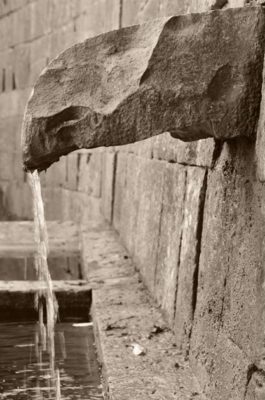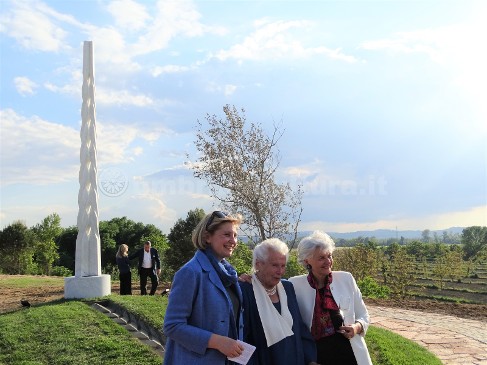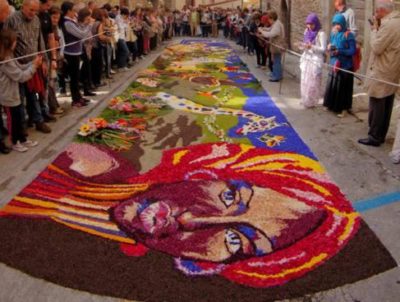Among olive groves and pine trees, inside the Parco della Piana, a pleasant green area close to the town of Todi, lies the charming Fontana dei Bottini. Delicious in its simplicity and in its functions, with less than 150 years of life, the fountain tells us of a simple peasant life that seems so far away in time. Built in 1872, it is called “dei Bottini” because it is supplied by small galleries by barrel vaults called Bottini. It consists of three basins, with different functions: one for the watering of animals and two for cloths washing, one for soaping and one for rinsing.
This fountain was, and is, fed by water drained from the galleries to be visited.
The nineteenth-century galleries are fully accessible even to the people less accustomed to this kind of experience, passable on foot and in extreme safety .
The bricks used for the masonry works were made with the material of the excavations, brought outside, worked in a furnace built for this purpose, and reintroduced into the form of bricks. The yard, or the “Fabbrica”, as it was called once, lasted about a century, and the furnace has also made artifacts for sale. The distinguishing mark, made of three letters: CDP can be seen stamped on some bricks, and is also found in other buildings of the city.
Walking through the galleries, the water flowing testifies their former and current function. The rounded corners at the intersection of the tunnels, to allow the passage of the wheelbarrow with which the material was carried outside, and every now and then, you realize you have arrived at the bottom of a well. These wells formed , together with the galleries and the cross passages, the “grid” system to carry water from the highest levels of the city, down and out.
Looking up at the walls of one of these wells , you can see the openings of an upper order of galleries that currently can be reached by caving techniques only.
Keeping on enter, until you get to an impressive staircase of a hundred steps, to 40 meters in altitude. Those steps have a double the function: connection and access between the galleries , and to slow down the flow of water, which, in free fall, could damage the gallery.
The scale is a gentle cascade of water. We note , about halfway down the staircase, the connecting point between the stretch excavated from above and one dug from beneath, not perfectly aligned, and a section of wooden beam still protrudes, enclosed in the walls, a clear sign it couldn’t be removed.
Finally returning to the starting point, the visit to these places, full of charm and appeal for the thousands of small and large stories they tell, is over.
by Benedetta Tintillini
Are you thinking about a journey? Click HERE
Leggi l’articolo in italiano




Bell’articolo Betta, e invitante. Complimenti.
Grazie Ioannis per il tuo continuo sopporto. Lo apprezzo enormemente.
Ricambio l’apprezzamento, sinceramente.